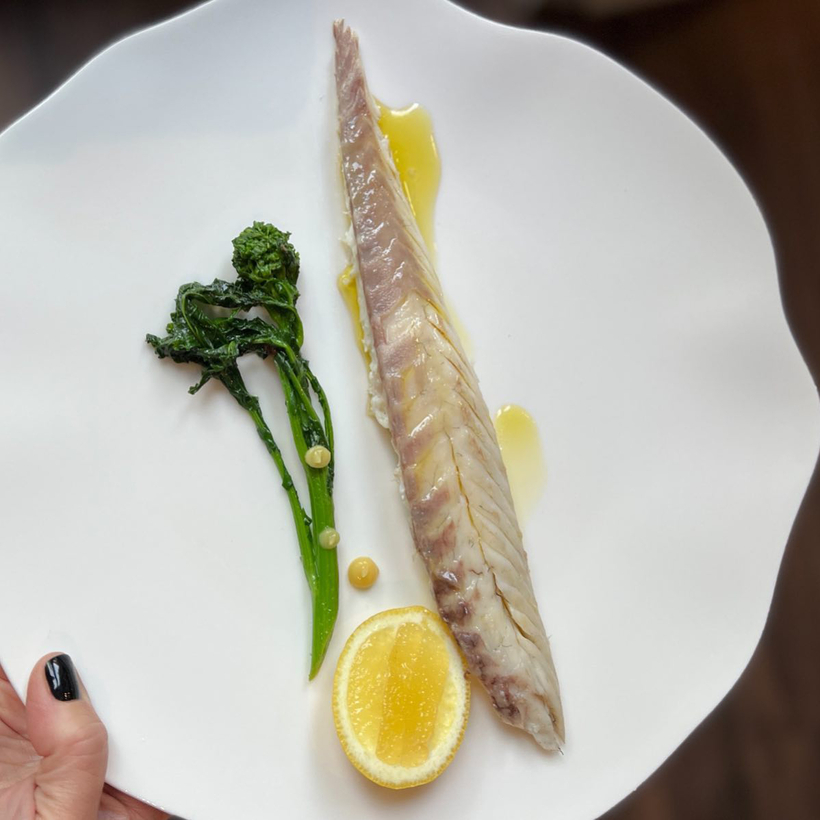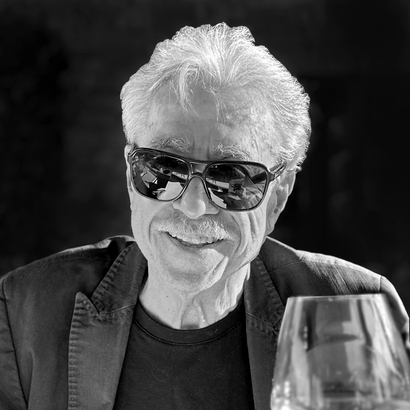The restaurant Materia, which opened less than two years ago in the tiny Connecticut borough of Bantam—nearby Lake Bantam is far better known—reminds me of the small-town, one-Michelin-starred restaurants in France and Italy that I used to love.
They were never pretentious, nor were they in the business of re-inventing food. And they were such a point of local pride that nearby farmers would regularly appear at their kitchen doors, offering products they had grown or raised.
Materia is unmistakably Italian. The food is upscale, meticulously prepared, beautifully plated, and clearly recognizable. The dish not to be missed, should you be fortunate enough to visit on a Tuesday, when it appears on the menu, is the whole branzino cooked in a pastry crust dotted with salt. The fish is extraordinarily moist, served with three side dishes, and offered at the not-seen-in-Manhattan price of $90.
The chef, David DiStasi, spent nearly five years in the kitchen of New York’s Le Bernardin during his younger years, which were not that long ago. I asked Éric Ripert, chef-owner of New York’s finest seafood restaurant, if DiStasi had learned the dish there. He replied, “We did it at Le Bernardin that way, for decoration. He learned it from me, but I learned it from Joel Robuchon at Jamin, in Paris.”

The name, Materia, is taken from the Italian expression materia prima, which translates as “raw material” and refers to the quality of his ingredients. A Michelin one-star restaurant by the same name operates in Italy, but DiStasi vows that he had never heard of it when he was naming his restaurant. The Web site of that other Materia, in Cernobbio, boasts that all its dishes are prepared “after experimentation and research.” Clearly, the two Materias have little in common.
Connecticut’s Materia is grounded in the fundamentals of Italian cuisine and fine dining. It is unabashedly old-fashioned in a multitude of ways. An attentive person answers the phone, seemingly at any hour, even though the restaurant is not open for lunch. It offers no online reservations (although e-mail requests are welcome). It does not demand non-refundable deposits, nor does it warn patrons about the perils of showing up late. Materia offers an absolutely threat-free atmosphere, unusual these days.
The dining room is tranquil, subdued, with no embellishments other than a modest centerpiece of hyacinths. The staff, at a time when restaurants complain about not being able to find help, is carefully trained, even engaging. The food was so attractively presented it commanded the room.
The restaurant reminds me of the small-town, one-Michelin-starred restaurants in France and Italy that I used to love.
An antipasti of veal sweetbreads—they tasted more French than Italian, although the Romans do love their offal—were the essence of opulence. They were lavished with a foie gras emulsion, a cauliflower purée, and a veal-and-mushroom reduction. They were crisp on the outside, meltingly soft inside. The result was a dish so rich that an order of two sweetbreads seemed impossible for one person to consume.
A special of porcini risotto—a friend and I happened to be at the restaurant the day a delivery truck dropped off the first fresh porcinis of the season—was masterful. That’s assuming you like your risotto extremely creamy.
“Too creamy?,” I asked my friend. “No,” she insisted. “It’s like a cloud.”
A most attractive entrée was barbecued lobster—that’s “astice alla barbecue” on the bi-lingual menu. The tail is cooked on a Japanese binchotan grill, the claws poached and then passed over the same grill, and the entire lobster is then glazed with barbecue sauce. On the side is a small cup of crustacean emulsion. It all seemed like much too much until I tasted the lobster and realized that barbecue had achieved unexpected heights.

My immediate reaction to an entrée that incorporated a massive chicken breast, an undersize bit of thigh meat prepared in a terrine, and potato purée was that it seemed simplistic after so much highly flavored food. I brought it home, used the breast meat in sandwiches, and was shocked at how well it showed up against less challenging competition. Materia offers takeout, and that entrée is perfectly suited to the task.
Where DiStasi abandons his usual restraint is with an engaging interpretation of tiramisu, the classic Italian dessert that Americans find irresistible. His presentation is particularly appealing. The outer layer is a hill of tiny, piped dollops of mascarpone and sabayon, and under that mound awaits a cookie soaked in espresso.
DiStasi’s parents came here from Italy, and they embraced meatballs, chicken parm, and all the stalwart dishes of the Italian-immigrant community. “I liked it all,” he admits.
Ripert of Le Bernardin recalls that DiStasi was well liked by the kitchen staff, while DiStasi remembers that he was “young and shy” when he worked there. After Le Bernardin, he moved on to Australia and then to Italy, which is where his style developed. “Italy kind of molded me, helped me find my way of cooking,” he says. “I learned a big part of Italian cooking is to use what is around you, what is available.”
Which brings us to the kitchen door of the restaurant. I hoped to learn that the many farmers of Litchfield County were driving tractors up to his door, offering him their prize products for the honor of having them served at Materia.
It was my only disappointment of the evening.
“It happens rarely,” he said. “Maybe with mushrooms now and then.”
A former sportswriter for the Philadelphia Evening Bulletin, Alan Richman has won 16 James Beard Foundation Awards for his journalism on food and wine, and a National Magazine Award for feature writing


